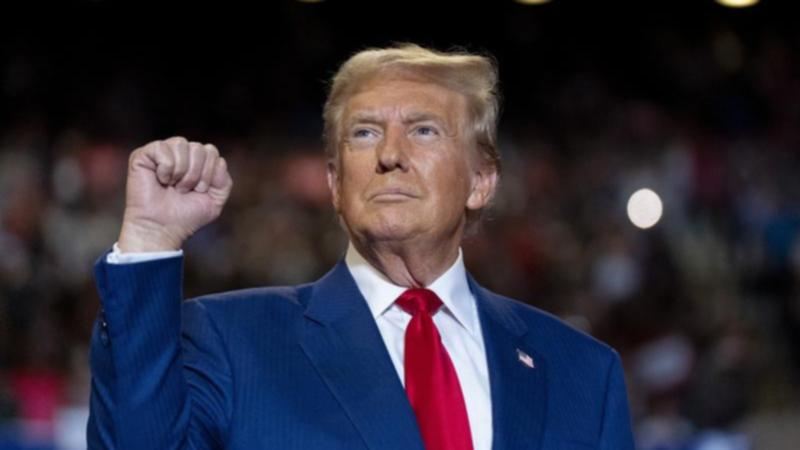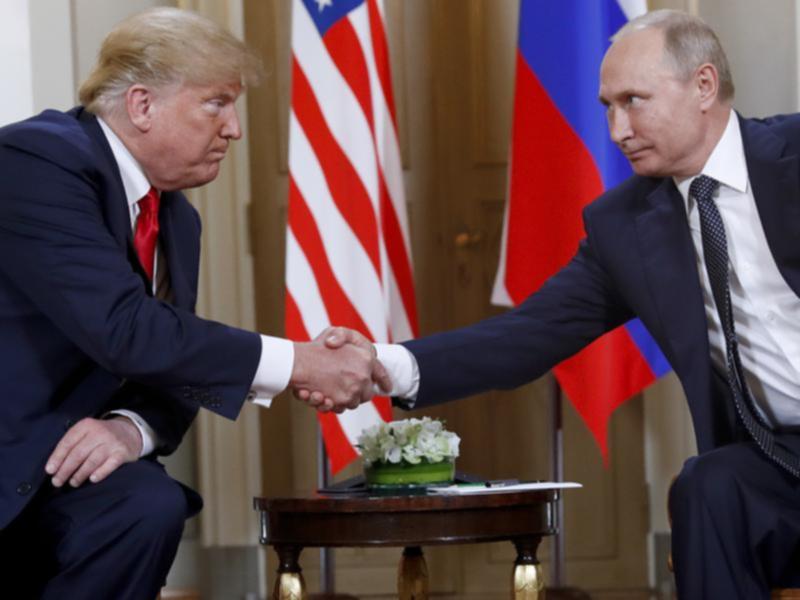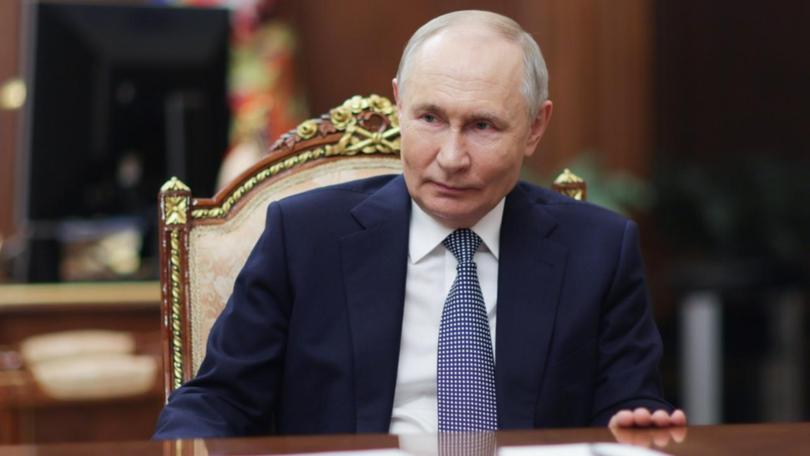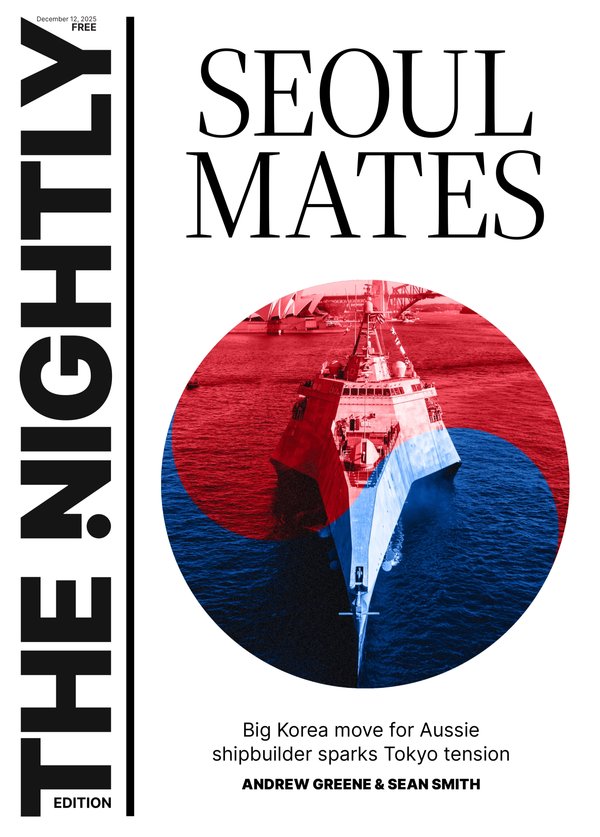THE NEW YORK TIMES: Donald Trump’s whirlwind now blows through Europe

The great collision has begun.
As President Donald Trump’s national security team arrived in Europe this week, very little about their hard-line message came as a surprise. But to the political and diplomatic leaders arriving in Munich on Friday for an annual security conference where fault lines in the Western alliance are always on display, it was the size and suddenness of the breach with the Trump administration that was shocking.
In sharp contrast to his first term, Trump began imposing tariffs before he began even cursory diplomatic negotiations, hitting allies and adversaries alike and wiping out years of trade agreements.
Sign up to The Nightly's newsletters.
Get the first look at the digital newspaper, curated daily stories and breaking headlines delivered to your inbox.
By continuing you agree to our Terms and Privacy Policy.While Trump was signing executive orders, his vice president, JD Vance, arrived in Paris and told an assemblage of leaders debating the future of artificial intelligence that America would dominate the industry, make the most advanced chips on American soil, write the software there and set the rules. Europe could either get on board or get out of the way.
Then came Ukraine. On Wednesday, Trump’s new defense secretary, Pete Hegseth, told a meeting of allies in Brussels that Ukraine must give up its objective of recapturing all its lost territory in the war with Russia.
Within hours, Trump was on the phone with Russian President Vladimir Putin, promising negotiations but having already conceded territory Russia occupies and an assurance to the Russian leader that Ukraine would never be in NATO. Meanwhile, Treasury Secretary Scott Bessent is in Kyiv to begin negotiating American rights to Ukraine’s untapped rare earth metals.
The declarations of unilateral concessions left European leaders, and of course President Volodymyr Zelenskyy of Ukraine, effectively sidelined, bystanders to the negotiations about the fate of Ukraine’s boundaries and, to some degree, Europe’s future. On Thursday they began pushing back against the new administration’s message, delicately, recognizing that to trigger Trump’s wrath could leave them in a deeper freeze.
“It is crucial that Ukraine is closely involved in all talks on its future,” NATO Secretary-General Mark Rutte said ahead of a meeting of NATO defense ministers in Brussels, sounding like a man who could not believe he had to state the obvious. British Defense Secretary John Healey said, “There can be no negotiation about Ukraine without Ukraine, and Ukraine’s voice must be at the heart of any talks.”
Zelenskyy, after initially thanking Trump on social media for pursuing a peace deal, said Thursday that he would not accept any agreement negotiated without him participating.
It is “important that everything does not go according to Putin’s plan,” he said. “There can be no talk about Ukraine without Ukraine,” he insisted.
It remains to be seen whether the Trump administration heeds the warning, ignores it, or tries to weave a middle path, giving Europe and Ukraine a sort of backbench role in the negotiations. But by Thursday, Hegseth’s comments had created such an uproar among European leaders that he seemed to backtrack on whether preemptive concessions would be made to Putin.
“Everything is on the table,” Hegseth said, making clear that it was Trump who was leading the negotiations and adding: “So I’m not going to stand and declare what President Trump will do or won’t do, what will be in or what will be out, what concessions will be made, or what concessions are not made.”

The first indications of which direction the administration will go may come on Friday, when Vance, Secretary of State Marco Rubio, and a raft of Trump’s other newly minted national security officials will jam into the quaint Bayerischer Hof, a luxury hotel that has been host to the conference since the Cold War. There is talk of a meeting with Zelenskyy.
But the fact is that Trump and his team have already laid out the new American agenda, demands up front. And in this new era of coercive diplomacy, there are many.
In interviews in the past few days, U.S. officials indicated they plan to press upon European nations that when it comes to defending Ukraine after a peace agreement, the burden will be almost entirely on Europe’s own forces, with America supporting with intelligence and consultations, but no troops.
And they will insist that Trump is not kidding when he demands that NATO nations double to triple their military spending, raising the goal from the current 2% of their gross domestic product to 5%. (The U.S. spends 3.5% and the White House will not say whether the U.S. would also comply with new target.)
The shift in tone from the United States and clash of objectives with its allies was dizzying and certain to be on display in Munich.
While the public pronouncements will grab the headlines, as usual, the most interesting conversations will take place behind closed doors.
Among the most fraught may be the meeting of the newly sworn-in director of national intelligence, Tulsi Gabbard, whose embrace of Russian talking points alarmed European officials, and CIA Director John Ratcliffe with the intelligence chiefs of the major allies, who have been deeply engaged in countering Putin’s sabotage campaign around Europe.
The British, Canadian, Australian and New Zealand spy chiefs — the so called “Five Eyes” who make up the tightest intelligence partnership, an outgrowth of the victors of World War II — will be looking for any signs that Trump is easing pressure on Russia.
Three years ago, the Europeans at Munich publicly doubted the U.S. and British assessment that Russia was about to invade; four days after the 2022 conference ended, Putin did exactly that. For the past two years, the Munich gathering has been filled with talk about how his illegal invasion strengthened NATO and expanded its ranks.
In private meetings and on the main stages, U.S. officials would reassure the world that Washington would stick with the war “as long as it takes” and vow “nothing about Ukraine without Ukraine.”
In side sessions, they would haggle over the wording of promises that, one day, Ukraine would become a full NATO ally, if there was disagreement about what someday meant.
Hegseth effectively dismissed those conversations as a fantasy, empty principles that he insisted European leaders and Zelenskyy should give up. When Trump held his 90-minute call on Wednesday with Putin, it was the first direct conversation between an American president and his Russian counterpart in more than three years.
But there were few celebrations that a peace deal could finally be seen in the distance. It was lost on no one here in Munich that Trump’s phone call was conducted by himself — and that he named a negotiating team of four aides without saying a word about the involvement of the Europeans or the Ukrainians.
Hegseth’s message this week was that recapturing lost lands by Ukraine was “an unrealistic objective.” And the new timeline for Ukraine’s NATO membership is, he argued, so far into the future it might as well be never.

But it was not just the blunt tone that jarred and angered European officials. It was also the fact that Trump and Hegseth seemed to tell Putin just what he wanted to hear about the shape of a deal.
“Trump has already made public concessions to Putin before negotiations have even begun,” Boris Pistorius, Germany’s defense minister, said Thursday at a meeting in Brussels. “It would have been better to talk about Ukraine’s possible NATO membership at the negotiating table.”
And he warned that any peace could be a false one. “Putin is constantly provoking the West,” he said, “it would be naive to believe the threat would actually diminish after such a peace agreement.”
In fact, the outlines of a ceasefire have been clear for some time, and it looks, not coincidentally, a lot like the armistice that brought the Korean War to a halt. Russia would effectively claim the lands its troops occupy, about 20% of Ukraine.
The big question is who would police the new lines, and there Trump is insisting Europe must stand up, and that if European troops were attacked, it would not constitute an attack on NATO forces that would require a response.
Zelenskyy has already dismissed the idea that Europe has the firepower, or the will, to stand up to Putin without U.S. help. But what he and European leaders are really having a hard time getting used to, one senior European diplomat said as he arrived on a plane to the conference, is that there is no longer agreement on the basic principle of assuring that Russia does not gain from its illegal invasion.
“It’s back to Thucydides,” he said, referring to the famous Greek chronicler of the Peloponnesian War who wrote, “The strong do what they will and the weak suffer what they must.”
This article originally appeared in The New York Times.
© 2025 The New York Times Company
Originally published on The New York Times
